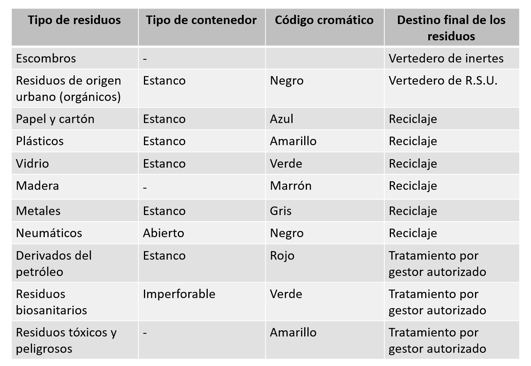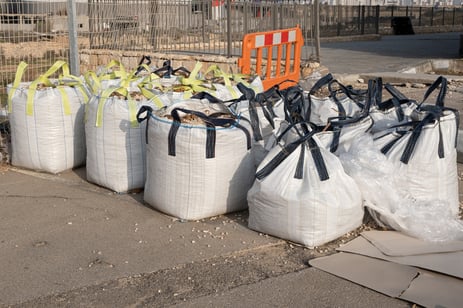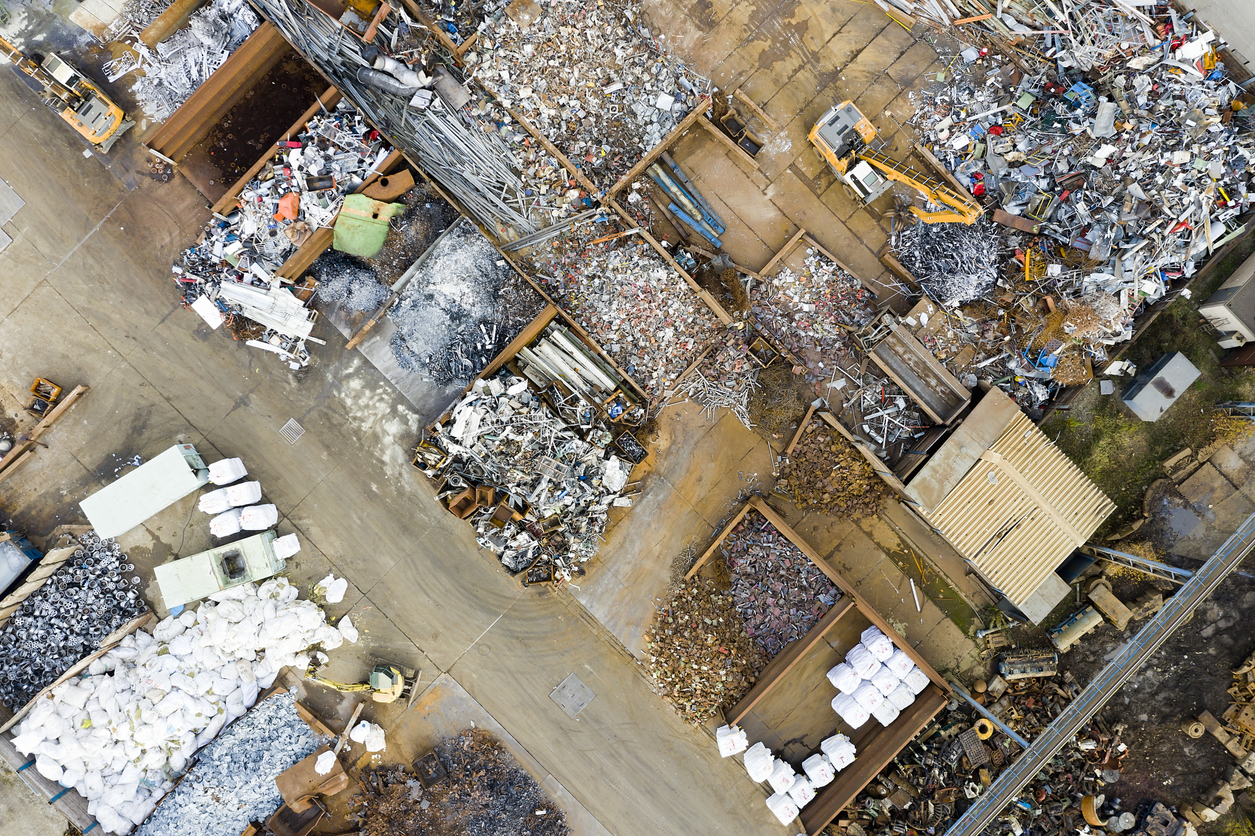The construction of infrastructure and buildings, fundamental for economic growth and urbanization, has grown exponentially in recent decades, which has led to a very significant increase in the amount of construction waste generated.
Buildings are responsible for one third of the total waste generated in the EU, according to the Institute of Building Technology. To address this situation and control where these wastes go and what is done with them, a series of regulations and actions have been developed, as we should not turn a blind eye, but act effectively and sustainably.
Construction Waste Management Plan (PGR)
 The Waste Management Plan (PGR) is an essential document in the process of waste management for construction and demolition. It plays a key role in planning, organising and controlling the management of waste generated in construction projects.
The Waste Management Plan (PGR) is an essential document in the process of waste management for construction and demolition. It plays a key role in planning, organising and controlling the management of waste generated in construction projects.
Through the PGR, the aim is to optimize waste management with the objective of minimizing environmental impacts and ensuring proper disposal of waste. It is a basic document in the sustainability certification process of buildings, as we will see in the following section of the article.
The contents that a Waste Management Plan must have are:
- Minimisation and prevention: actions to be carried out to prevent the generation of waste during the construction phase or to reduce its production (training of workers, minimisation of surplus material, protection of materials, etc.) must be identified
- Estimation and type of waste produced on site: quantify by groups (ceramics, concrete, wood, etc.) in tonnes andm3 and by their EWC.
- Waste management operations: waste separation process on site, types of containers, location, managers to work with, EWC and type of waste to be managed, distance to the site, estimated percentage of valorisation, etc.

Example of basic information on waste treatment in a WMP
Waste management laws in the EU
At the European level, waste management has been at the heart of the sustainability agenda for decades. Two directives are key in this process: Directive 2008/98/EC and its subsequent amendment, Directive 2018/851.
The main objective of the directives is to protect the environment and human health, emphasising the importance of using appropriate waste management, recovery and recycling techniques to reduce pressure on resources and improve their use.
EU Directive 2008/98/EC, also known as the Waste Framework Directive, establishes a comprehensive legal framework for waste management in the EU, laying the foundations for waste prevention, reuse, recycling and recovery, thereby reducing reliance on landfill disposal.
Among the main aspects of the directive, the following stand out:
- Waste hierarchy: establishes a priority order in waste management: prevention > preparation for reuse > recycling > recovery > disposal.
- "Polluter pays" principle: the original producer of the waste must bear the costs of managing that waste.
- Recycling and recovery objectives: in the case of construction and demolition waste, it is stipulated that at least 70% of the waste must be prepared for reuse, recycling, and other recovery.
The amending directive EU 2018/851 represented an additional step towards more sustainable and efficient waste management, introducing improvements in EU waste management, such as new recycling targets for municipal waste or incentives to apply the previously mentioned waste hierarchy.

Waste management in sustainable LEED and BREEAM certifications
 Sustainable certifications, such as BREEAM and LEED, play a crucial role in promoting environmentally friendly buildings. Waste management is a very important component in both certifications, although each has its peculiarities.
Sustainable certifications, such as BREEAM and LEED, play a crucial role in promoting environmentally friendly buildings. Waste management is a very important component in both certifications, although each has its peculiarities.
For its part, BREEAM places great value on the implementation of environmental measures on the construction site, which is why exemplary waste management is necessary. Prior to the commencement of work, a PGR, discussed above, is required. In the event that waste from demolition is also to be generated, a Pre-execution Audit must also be carried out, which is a document very similar to the WMP, but focused on demolition waste.
In order to obtain BREEAM points for on-site waste management, the transport of waste from the construction site to the waste management company must also be monitored on a monthly basis, grouped by material type (ceramics, concrete, wood, etc.) and waste certificates issued by the authorised waste management companies must be submitted. Another important point that BREEAM rewards is waste valorisation.

BREEAM Report on Site Waste Management at the End of Construction
The aim is to collect sufficient data to produce end-of-construction reports comparing the waste estimated in the PGR with the waste actually produced, to help us become aware of the impact of the project and to improve in the future.
For its part, LEED has a prerequisite that obliges us to generate a PGR with a series of points to be developed, in addition to a credit that allows us to obtain 2 points depending on the percentage of waste that we are going to revalue. As always, we must justify everything with photographs and the relevant documentation.
Relationship with Taxonomy EU and Level(s)
Construction waste management is also linked to EU initiatives designed to encourage more sustainable practices in construction. Among these tools, Level(s) and Taxonomy EU stand out.
Level(s) is a European Framework that provides a common language for assessing and reporting on the sustainability performance of buildings based on 6 macro-targets addressing different aspects of sustainability. The macro-objective where all the information regarding waste management is collected is the second one: resource-efficient and circular material life cycles. Within this macro-objective is indicator 2.2, Construction and demolition materials and waste. This indicator defines a standardised way of measuring the overall amount of waste generated in kg.
On the other hand, the European Taxonomy regulation categorises economic activities as sustainable or not. With regard to construction waste, compliance is considered to be achieved when indicator 2.2 of Level(s), as developed above, is measured at Level 2.
In summary, waste management in construction stands as an indispensable component in sustainable building. Through standards such as BREEAM and LEED, their relevance in the construction industry has been consolidated, rewarding practices that prioritize traceability, material valorisation and accurate documentation. However, the true transformation is manifested on the ground, where good operational practices become the protagonists. Separation at source, reuse of materials, recycling and waste control are concrete actions that drive sustainable waste management.


